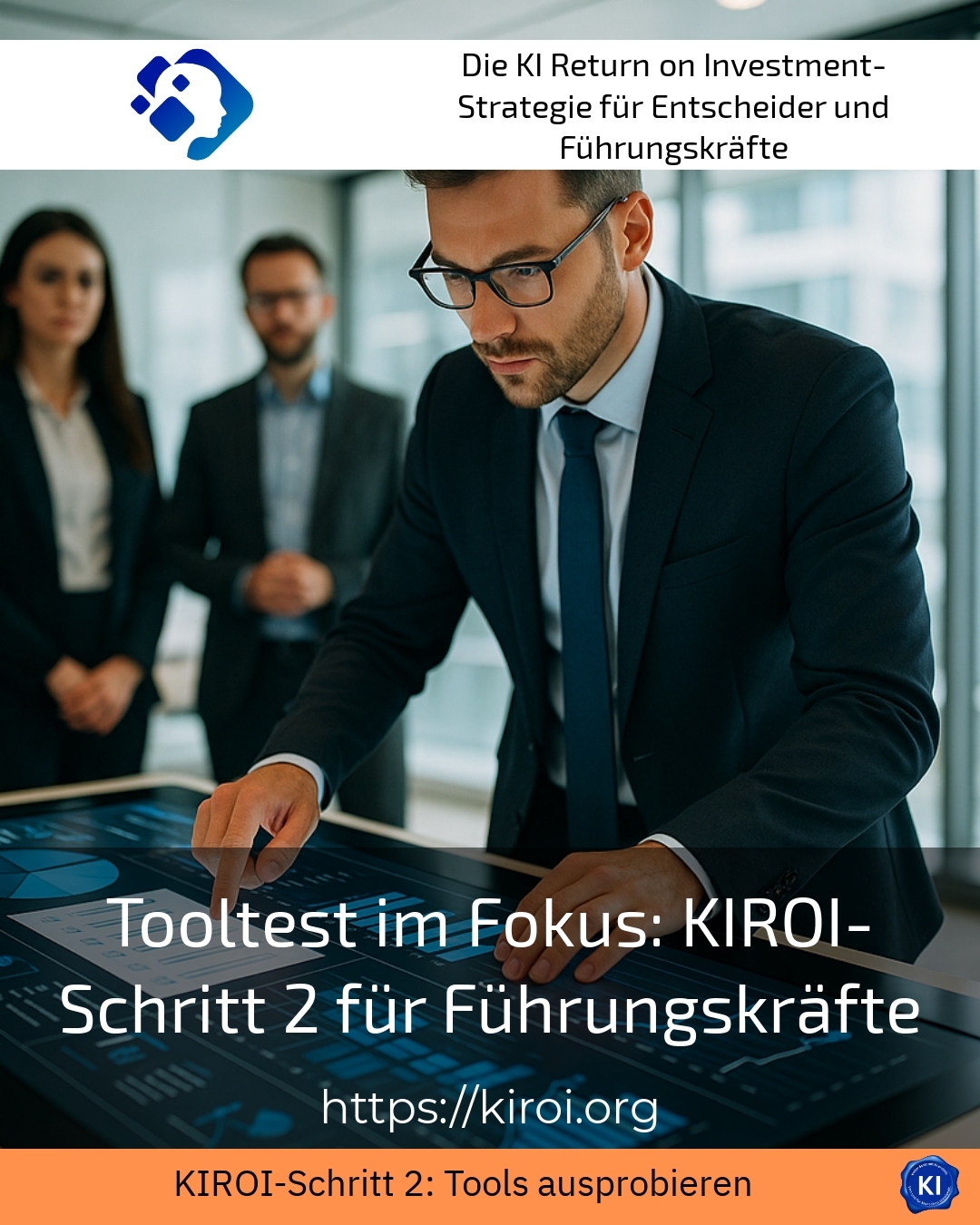In the age of digital transformation, the term Tooltest is becoming increasingly important - especially as part of KIROI step 2 for managers. Here, the tool test supports the structured selection of suitable software solutions and digital tools. This allows projects to be organised more efficiently and saves valuable resources.
How the tool test supports managers in KIROI step 2
Managers are often confronted with a multitude of technical tools. The Tooltest offers a systematic method for organising this diversity and finding individually suitable solutions. The starting point is a detailed definition of the requirements in your own working environment and project.
For example, a manufacturing company can carry out a tool test as part of the KIROI process to evaluate process monitoring software. Not only the functionality is tested, but also the integration into existing production lines and the user-friendliness for employees. This helps to reduce false alarms and optimise maintenance times.
The effect of the tool test can also be seen in sales: one team tested an AI-supported chatbot. About the Tooltest it was discovered that the customisability of the bot to individual customer enquiries is essential for success and counts for more than just standard functions. This results in better customer loyalty and more efficient communication.
In addition, user acceptance by employees is a key aspect. A service company was faced with the challenge of introducing a new CRM system. The tool test made it possible to compare different candidates based on real scenarios. The choice fell on a solution that offered intuitive user guidance and could be flexibly adapted during operation.
Practical implementation of the tool test: how to make a successful selection
The tool test is started by precisely analysing your own requirements and involving various stakeholders. Managers should also obtain targeted feedback from end users. Test criteria can be defined based on this input.
An example from the marketing industry: a company tested tools for automating campaigns. The tool test examined how well the software integrates into systems already in use, whether the automation rules can be flexibly adapted and how comprehensible the user interface is.
In another case, a fitness centre used the tool test to select a customer management system. In addition to the functionality, the users primarily rated the integration into everyday training and the manufacturer's support. A solution was chosen that fulfils individual needs and improves the customer experience.
Another example can be found in the accounting department of a medium-sized company. A tool test was carried out there for the introduction of digital document processing. It turned out that, in addition to the technical interface, the training programmes also had a decisive influence on acceptance.
Best practice: Tool testing as a holistic process
BEST PRACTICE with one customer (name hidden due to NDA contract) and then the example with at least 50 words.
The tool test proved to be an integrative element in a successful project. From the initial contact to the final judgement, managers and users were closely involved. This participatory approach promoted acceptance and significantly reduced risks during the introduction.
Why the tool test in KIROI step 2 is so important
The Tooltest allows decisions to be made based on comprehensible criteria. This minimises bad purchases and frees up budgets. At the same time, it supports managers in actively shaping the digital transformation and selecting the right companions for complex projects.
In practice, many managers report that they gain transparency through the tool test and can better manage complexity. The combination of technical evaluation, user-orientation and strategic integration makes the tool test a valuable instrument.
My analysis
The Tooltest in KIROI Step 2 is an essential building block for managers who want to make successful decisions in dynamic environments. Structured tests, involvement of relevant stakeholders and practical evaluation create a solid basis for sustainable software selection. Companies benefit from improved efficiency, greater acceptance and a future-proof digital infrastructure.
Further links from the text above:
Tool test in focus: KIROI step 2 for managers
Tooltest: Successful AI innovations with KIROI Step 2 ...
KIROI step 2: Unleash AI potential with the tool test
For more information and if you have any questions, please contact Contact us or read more blog posts on the topic Artificial intelligence here.















